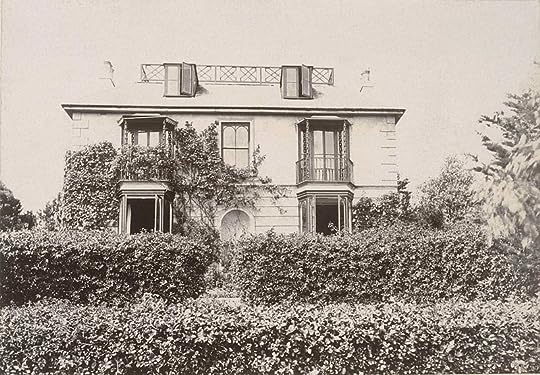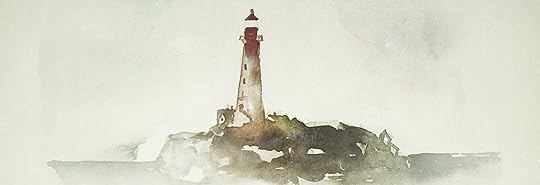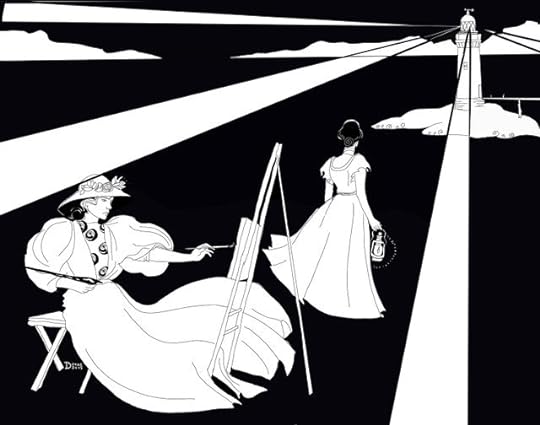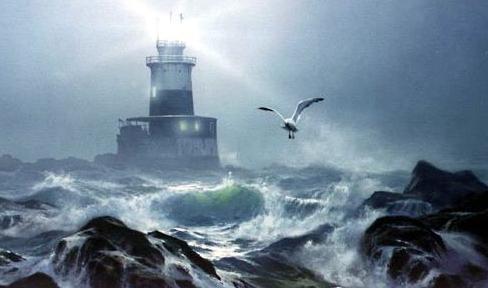What do you think?
Rate this book


288 pages, Paperback
First published May 5, 1927


The insincerity slipping in among the truths roused her, annoyed her. She returned to her knitting again. How could any Lord have made this world? she asked. With her mind she had always seized the fact that there is no reason, order, justice: but suffering, death, the poor. There was no treachery too base for the world to commit; she knew that. No happiness lasted; she knew that.
At the far end, was her husband, sitting down, all in a heap, frowning. What at? She did not know. She did not mind. She could not understand how she had ever felt any emotion or any affection for him. She had a sense of being past everything, through everything, out of everything, as she helped the soup, as if there was an eddy – there – and one could be in it, or one could be out of it, and she was out of it. It’s all come to an end, she thought…
“Nor did I wonder at the lily’s white,
Nor praise the deep vermilion in the rose:
They were but sweet, but figures of delight,
Drawn after you, you pattern of all those.
Yet seem’d it winter still, and, you away,
As with your shadow I with these did play.”
What is the meaning of life? That was all – a simple question; one that tended to close in on one with years. The great revelation had never come. The great revelation perhaps never did come. Instead there were little daily miracles, illuminations, matches struck unexpectedly in the dark; here was one. This, that, and the other…





"She felt... how life, from being made up of little separate incidents which one lived one by one, became curled and whole like a wave which bore one up with it and threw one down with it, there, with a dash on the beach."

 come to my blog!
come to my blog!“Veía ella todo con tanta claridad, con tanta seguridad, cuando dirigía la mirada a la escena; pero todo cambiaba cuando cogía el pincel. Era en ese momento fugaz que se interponía entre la visión y el lienzo cuando la asaltaban los demonios, que, a menudo, la dejaban a punto de echarse a llorar, y convertían ese trayecto entre concepción y trabajo en algo tan horrible como un pasillo oscuro para un niño. Le sucedía con frecuencia: luchaba en inferioridad de condiciones para mantener el valor; tenía que decirse: «Lo veo así, lo veo así», para atesorar algún resto de la visión en el corazón, una visión que un millar de fuerzas se esforzaba en arrancarle.”“Al faro” es un cuadro catártico para la autora, como seguramente lo fueron todas sus novelas, un intento de reconciliarse con sus padres, encarnados aquí por el Sr. y la Sra. Ramsay. Esa implicación personal en su obra, más allá de la búsqueda del valor literario, como para Lily Briscoe, el tercer personaje principal de la obra, significaba la pintura, seguramente contribuye a esa fuerza especial que caracteriza su prosa.
“Acabarían colgándolo en la buhardilla o deshaciéndose de él, pensó. Pero ¿qué más daba?, se preguntó volviendo a coger el pincel.”Pero, sobre todo, “Al faro” es un bello cuadro, casi tan magnífico como “La señora Dalloway” con la que comparte algunos temas y, sobre todo, una lírica y un estilo. Por encima de cualquier otra consideración, es la forma impresionista, a medio camino entre la narrativa y la poesía, lo más sobresaliente del relato como lo fue en aquella. Nuevamente se repite aquí la combinación de la primera y tercera persona con la que la autora concatena los distintos diálogos interiores y los consiguientes puntos de vista que conforman la narración; se conserva también el gusto por el detalle cotidiano, así como el poder evocador de la recreación de ambientes y la descripción sentimental de escenarios y objetos.